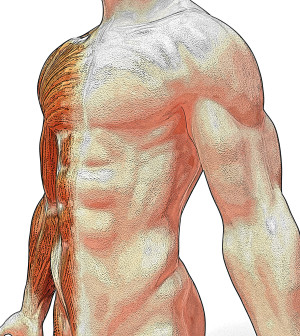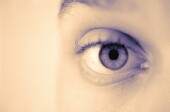- Navigating Your Midlife Crisis: Embracing New Possibilities
- City Raccoons Showing Signs of Domestication
- Mapping the Exposome: Science Broadens Focus to Environmental Disease Triggers
- One Week Less on Social Media Linked to Better Mental Health
- Your Brain Changes in Stages as You Age, Study Finds
- Some Suicide Victims Show No Typical Warning Signs, Study Finds
- ByHeart Formula Faces Lawsuits After Babies Sickened With Botulism
- Switch to Vegan Diet Could Cut Your Greenhouse Gas Emissions in Half
- Regular Bedtime Does Wonders for Blood Pressure
- Dining Alone Could Mean Worse Nutrition for Seniors
Can Exercise and an Occasional Drink Boost Eye Health?


Regular exercise and occasional drinking may be good for your eyes, a new study suggests.
Researchers analyzed data collected from nearly 5,000 Wisconsin adults, aged 43 to 84, from 1988 to 2013. Over 20 years, 5.4 percent of them developed visual impairment.
Visual impairment is defined as sight loss that’s caused by eye disease, injury or a medical condition and that cannot be corrected by glasses or contact lenses.
This occurred in 6.7 percent of people who were inactive and 2 percent of people who exercised three or more times a week. After adjusting for age, the researchers found that people who got regular exercise were 58 percent less likely to develop vision problems than those who were inactive.
Visual impairment developed in 11 percent of nondrinkers and 4.8 percent of occasional drinkers, defined as those who have less than one serving in an average week. After adjustment for age, occasional drinkers were 49 percent less likely to develop eye problems than nondrinkers, the study found.
Heavy drinkers and heavy smokers were somewhat more likely than nondrinkers and nonsmokers to develop visual impairment, according to the study published online recently in the journal Ophthalmology.
“While age is usually one of the most strongly associated factors for many eye diseases that cause visual impairment, it is a factor we cannot change,” lead researcher Dr. Ronald Klein, of the University of Wisconsin School of Medicine and Public Health, said in a journal news release.
“Lifestyle behaviors like smoking, drinking and physical activity, however, can be altered,” he added. “So, it’s promising, in terms of possible prevention, that these behaviors are associated with developing visual impairment over the long term.”
However, the association found in the study does not prove a cause-and-effect relationship.
Further research is needed to determine whether changing lifestyle behaviors would have a direct effect on reducing vision loss, Klein said.
The number of Americans with visual impairment is expected to grow to at least 4 million by 2020, a 70 percent increase from 2000.
More information
The U.S. National Library of Medicine has more about vision impairment.
Source: HealthDay
Copyright © 2025 HealthDay. All rights reserved.










